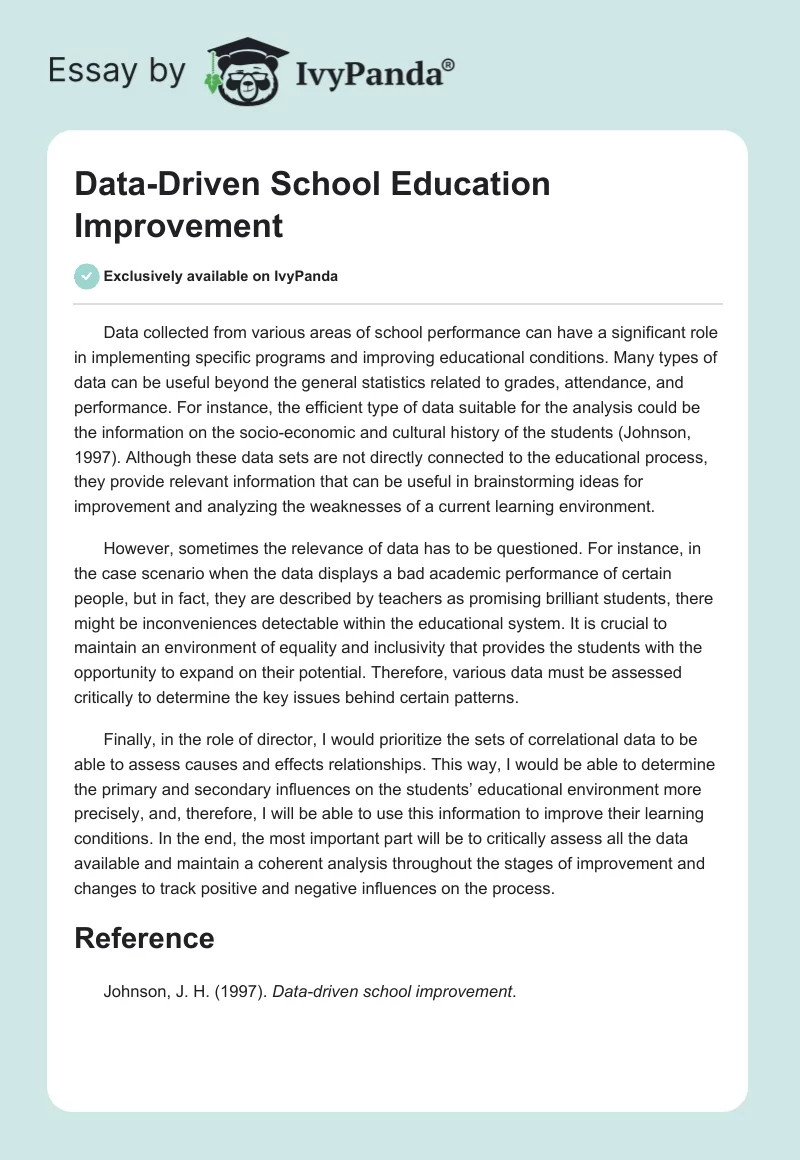Data collected from various areas of school performance can have a significant role in implementing specific programs and improving educational conditions. Many types of data can be useful beyond the general statistics related to grades, attendance, and performance. For instance, the efficient type of data suitable for the analysis could be the information on the socio-economic and cultural history of the students (Johnson, 1997). Although these data sets are not directly connected to the educational process, they provide relevant information that can be useful in brainstorming ideas for improvement and analyzing the weaknesses of a current learning environment.
However, sometimes the relevance of data has to be questioned. For instance, in the case scenario when the data displays a bad academic performance of certain people, but in fact, they are described by teachers as promising brilliant students, there might be inconveniences detectable within the educational system. It is crucial to maintain an environment of equality and inclusivity that provides the students with the opportunity to expand on their potential. Therefore, various data must be assessed critically to determine the key issues behind certain patterns.
Finally, in the role of director, I would prioritize the sets of correlational data to be able to assess causes and effects relationships. This way, I would be able to determine the primary and secondary influences on the students’ educational environment more precisely, and, therefore, I will be able to use this information to improve their learning conditions. In the end, the most important part will be to critically assess all the data available and maintain a coherent analysis throughout the stages of improvement and changes to track positive and negative influences on the process.
Reference
Johnson, J. H. (1997). Data-driven school improvement.

